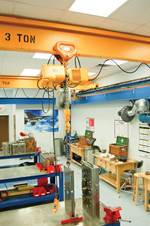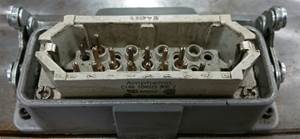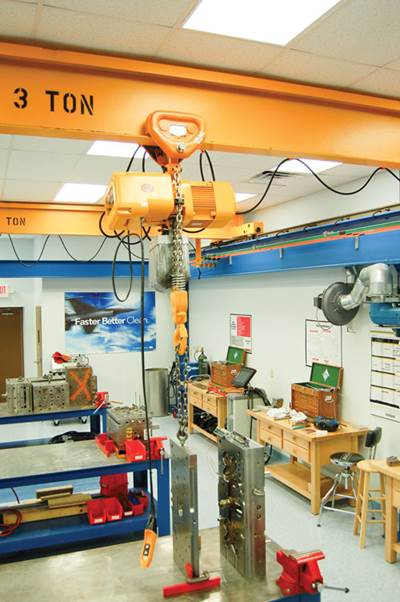Tooling: Setting Up a Mold Shop: Part I
I had a toolmaker once tell me he used to slam his hand in his car door before work every morning just to get him in the right frame of mind to work in his shop.
I had a toolmaker once tell me he used to slam his hand in his car door before work every morning just to get him in the right frame of mind to work in his shop. Toolmaker humor of course—but the point is that nothing is more frustrating to a tradesman who wants to do a good job, and has the skills to do a good job, but is severely handicapped by his shop’s design, layout, tools, data support systems, lighting, and overall state of cleanliness.
The good news is that many repair technicians who attend our maintenance certification classes tell us they are in the process of upgrading their shops, so more companies are realizing that if they expect accurate, efficient, and professional mold maintenance, then they need to raise the bar on the physical aspects of a shop to get good results and foster an atmosphere of pride in workmanship.
Yes, it takes commitment and a disciplined culture to keep shelves, files, spare parts, tools, solvents, and water-leak and hot-runner stations clean and organized, and to schedule a weekly time to sweep and mop floors. But if these things are left unchecked, the unorganized shop and prevailing “who cares” attitude will bleed over into employee work habits and eventually your mold performance and maintenance costs as well.
BEST OF SHOW
I have visited more than 100 mold shops during the past dozen years. One particular shop always stands out as the “Mack-daddy” of all mold repair shops that I have ever seen.
Walking into this shop was just sweet. A half-dozen 12-ft-long benches, lined up parallel and perfectly spaced and level, gleamed under an abundance of fluorescent lighting. The steel benchtops had a smooth and polished patina that reflected the regular care given them by appreciative maintenance technicians. Half the benches held molds fully disassembled, with standing plates spread out and braced, ready for troubleshooting. Underneath the benches were all kinds of neat fixtures, sorted containers of extra bolts, water fittings, and mold-repair stuff arranged in bins and sitting on clean shelves decked out in the company colors. Clean, functional shelves in a repair shop not full of obsolete tooling.
As I was taking all this in, it dawned on me that something was missing: Where were the utilities? Those ingredients that bring a bench to life—water, electricity, and air? Where were the typical broken and bent conduit lines hanging loosely from the very wires they were installed to protect? Or the ones falling from the ceiling and good only for a place to hang your favorite risqué calendar? And how about those air lines and water hoses that snake around your feet? Every shop has them. Gone—I was told—underground.
Every bench in this idyllic layout was appointed with all utilities fed from below the spotless blue, stone-hard floor. Each tech could test molds for water or air leaks and perform electric checks on all hot-runner systems at his/her own bench without waiting for the communal equipment to become available, or have to drag the mold to different stations to be tested.
On top of all this, the shop was beautiful. The paint scheme even included the machinist vise mounted on the end of each bench, which was painted to match the monorail overhead hoist system. That’s right, no communal bridge crane here. Each bench had its own fixed I-beam overhead complete with an electric two-speed hoist.
A state-of-the-art ultrasonic wash tank was tucked back into a special cleaning room away from the benches and traffic flow of forklifts and people. So that’s how everything remains so clean, I realized. Very little scrubbing was performed at the bench.
And just when I thought I’d seen it all, mounted overhead on the wall was a vacuum system that could extend out to all the benches and extract the nasty smell of burning plastic when hot-runner molds were heated up or tested.
These guys had it made. Looking spiffy in their uniforms and working on cushy floor mats, the only thing broken in this air-conditioned shop was barely a sweat. They happily plied their trade for a company run by a general manager who realized the value of maintenance and the impact it had on keeping his business profitable. He knew that great work happens in great shops. His vision is reflected in the care given the 10-year-old manufacturing facility, and proven in the Key Performance Indicator charts that hung on a large communications board just inside the shop doorway.
The charts displayed critical mold performance and maintenance data, costs, and current defect targets, so all repair technicians could see objectives achieved and new challenges discovered through excellent documentation practices and a strong commitment to continuous improvement. Documenting and publicly displaying cavitation goals met, defects eliminated, and dollars saved reinforced the idea that a well-planned repair shop can do much more than clean molds and shim tooling. It is a profit generator driven by a culture of pride among technicians who take their craft seriously. A technician working in this environment will naturally rise to a higher level of skill, professional discipline and craftsmanship.
BACK TO REALITY
Unfortunately, mold-maintenance shop layout and tools don’t often qualify for much more than off-the-cuff consideration, because upper management is more concerned with the direct money-making aspects of manufacturing areas such as production, assembly, and well, just about everything else. Most mold shops are created through space acquisition initiated through the need for immediate expansion. Many sprang forth overnight without much planning, simply out of a need to set a mold down and replace some tooling.
Talking to guys in many shops always seems to solicit the same basic response: “This is where we got stuck,” or “I don’t know how we got back in this corner,” or “We have a bench over here and more in a room over there.” It seems to be assumed by upper management that any old space will work just fine for mold maintenance. The idea that “all we need are rags, solvent, and shims to keep our molds running” is born from ignorance of the job and is sustained by a “fire-fighting” rather than proactive planning culture.
Just as important as creating a solid maintenance plan for molds is the shop in which the repair takes place. Creating an efficient repair shop must take into consideration the MPP (Mold Pull Pace) of the company (number of molds cycled through the toolroom in a week), mold sizes and types, and the specific types of tasks that go into cleaning and repairing particular molds throughout the week.
As processors continue to look for ways to improve their manufacturing systems, many will be looking at ways to either improve the workflow or capacity of their mold repair shop or possibly build a new one. In the next couple of articles we will delve into these and other issues.
About the Author
Steven Johnson is the operations manager for ToolingDocs LLC, part of the PCIC Group of Companies. Steve also has is own business, MoldTrax in Ashland, Ohio. He can be reached at steve.johnson@toolingdocs.com or (419) 289-0281.
Related Content
Back to Basics on Mold Venting (Part 1)
Here’s what you need to know to improve the quality of your parts and to protect your molds.
Read MoreHow to Design Three-Plate Molds: Part 5
There are many things to consider, and paying attention to the details can help avoid machine downtime and higher maintenance costs. In this installment, the focus is on design and placement of sucker/puller pins.
Read MoreHow to Design Three-Plate Molds, Part 1
There are many things to consider, and paying attention to the details can help avoid machine downtime and higher maintenance costs, and keep the customer happy.
Read MoreHot Runners: How to Maintain Heaters, Thermocouples, and Controls
I conclude this three-part examination of real-world problems and solutions involving hot runners by focusing on heaters, thermocouples, and controls. Part 3 of 3.
Read MoreRead Next
Tooling: Setting Up Shop: Part III
Our last column covered shop size and bench requirements for a 50 x 50 ft mold-repair shop that will have a MPP (Mold Pull Pace) of approximately 25 to 30 multi-cavity molds a week and employ four repair technicians in a six-bench layout.
Read MoreFor PLASTICS' CEO Seaholm, NPE to Shine Light on Sustainability Successes
With advocacy, communication and sustainability as three main pillars, Seaholm leads a trade association to NPE that ‘is more active today than we have ever been.’
Read More



















